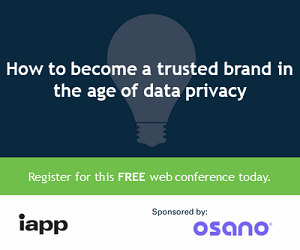By Janet Steinman, CIPP/US
In Rewire: Digital Cosmopolitans in the Age of Connections, Ethan Zuckerman says the world isn’t flat. Not metaphorically, anyway. Despite the fact that “atoms, people and bits” are sent all around the world, we focus on people who are like us. Zuckerman, director of the MIT Center for Civic Media, believes that we still need to “shape” our means of communications so that we learn what we need to know, not just what we want to know.
Zuckerman says all the parts of our interconnected world are not interconnected in the same way and do not have the same effect. Atoms, people and bits (of information sent over the web) move differently throughout the world.
For example, the web made it possible to discover the cause of and treatment for SARS, but the ease of traveling across far distances helps to spread the disease. And we are increasingly dependent on goods that are imported from countries we know nothing about, but goods seem to move more seamlessly than people or bits because the migration patterns globally are deeply uneven and are held in check by immigration laws and customs.
Every nation is part of the day-to-day reality of all other nations. We access bits based mostly on our interests and our attention to them. Tens of thousands of newspapers are available online, but few people are looking at any news beyond their own border. And gatekeepers, those who control the input to streams of goods or information channels, are like cogs in a machine. The channels are mostly owned by U.S. and European companies, and serious inequalities exist regarding access to communications. We are actually more likely to get information about other parts of the world from our “micro-publics,” our friends on social networking sites. Our beliefs and outlooks become hyper-personalized. The web becomes like an echo chamber. We are only listening to people who are like us. But because information on the web is unregulated and not necessarily true, should we rely on our micro-publics as much as we do?
Zuckerman quotes communication researcher Paul Lazarsfeld, who states that media is less influential on our opinions than the “two-step flow of communication,” meaning we assign significance to something based on what a friend communicates to us, which we then communicate to another friend, and so on.
Additionally, we are most likely to agree with an opinion that is close to the opinion we hold ourselves. Zuckerman notes that U.S. President John F. Kennedy was surrounded by advisors who had the same background as he: upper-middle class to wealthy, white and attended mostly the same prep schools, colleges and law schools. So he received advice from various people that was quite similar. It was also similar to what Kennedy himself would have concluded. Had he received some dissimilar or conflicting advice regarding Vietnam, U.S. involvement may have turned out very differently. Zuckerman notes a study by Scott Page of the University of Michigan who has found that, all things being equal, a diverse team selected at random performs better than a team of like-minded individuals.
Of course, the benefits of connectedness are incalculable. The previously mentioned attack on SARS using information from all around the globe is just one of countless examples that Zuckerman gives. The bits may not move as much as we like, but when they do, lives can be saved at a large scale, Zuckerman writes. Foreign countries, for example, have translated for themselves the U.S. Federal Emergency Management Agency Earthquake Safety Manual.
Zuckerman calls the idea that the web has created a completely connected world “imaginary cosmopolitanism.” He wonders if, as an interconnected world, we’re actually getting enough information about the rest of the world in order to flourish. He believes that we are only seeking information that we want, not what we need. But he never defines “what we need,” only referring to atoms, people and bits “needed to function in a connected world.” Not only is this circular, it has a touch of elitism—telling us we aren’t doing it right but not actually explaining what is right. He makes a judgment without setting forth the criteria he used to come to this conclusion. He undervalues the information that we do send around the world; even if we do tend to connect to people like ourselves and seek out information that corresponds to our interests, we get much more data and meet many more people than we do in the non-virtual world. One of the two-edged swords of the web is that it provides endless opportunities to distract ourselves. Web-surfing allows us to stumble upon subject matters we would never have otherwise thought of investigating.
To increase our connectedness, we need to cultivate bridge figures. That is, people who have comfortably crossed two or more cultures. Musicians are some of the most effective bridge figures due to the fact that it is so easy to access music over the web. Translators and bloggers are among other good bridge figures. Certainly, there are politics embedded in our information-sharing policies and practices. The countries and people with the most money still exert the most influence, but global sharing of atoms, people and bits makes the world, if not flat, at least headed in that direction.
We need to be willing to stretch our minds for such a world.
Janet Steinman, JD, CIPP/US, is a member of the Harvard Law School Online Media Legal network and the American Bar Association Advisory Panel. She is experienced in laws on information technology, data licensing, e-commerce, computer technology, software development and licensing, and U.S. and foreign data privacy and security laws including HIPAA and GLBA.






























Comments
If you want to comment on this post, you need to login.